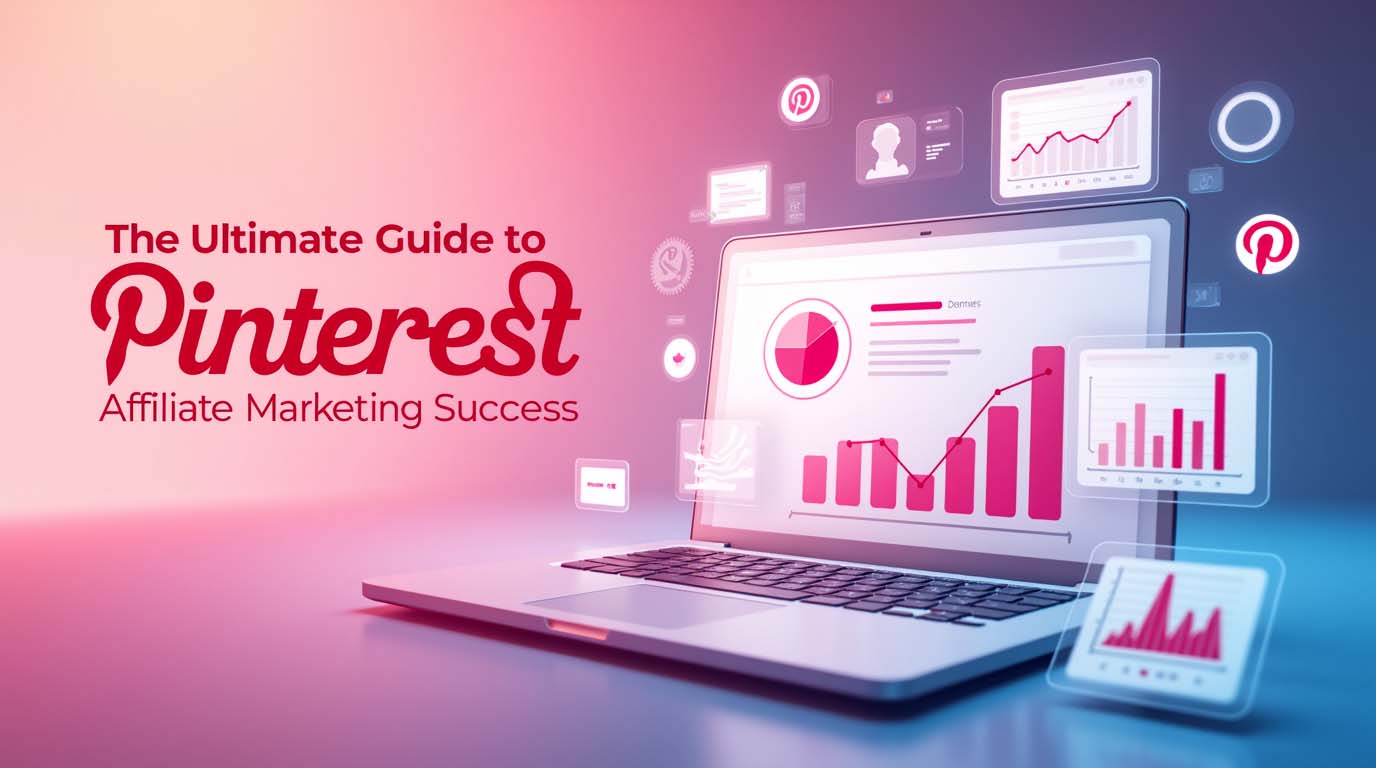Affiliate marketing is one of the most lucrative ways to earn passive income online, and Pinterest affiliate marketing has become a goldmine for savvy marketers. In fact, I’ve personally generated over $22,000 in the last 30 days using my Pinterest strategy. If you’re ready to unlock the potential of affiliate marketing, this guide will walk you through the steps to find your niche, build a captivating profile, and start earning.
Why Pinterest for Affiliate Marketing?
Pinterest isn’t just a platform for DIY projects and recipes—it’s a visual search engine with over 450 million active users. Unlike other social media platforms, Pinterest users are actively searching for ideas, products, and solutions, making it the perfect place to promote affiliate products.
Step 1: Choosing the Right Nich
The foundation of any successful affiliate marketing strategy is finding the right niche. Popular niches on Pinterest include:
- Women’s fashion
- Home decor
- Personal finance
- Fitness and wellness
- Travel
However, I’ve found that the self-improvement niche is incredibly lucrative. By focusing on content that helps people improve their lives, you can promote a wide range of affiliate products, such as books, journals, planners, health supplements, and workout equipment.
Pro Tip: Choose a niche you’re passionate about. Your enthusiasm will shine through in your content, making it more engaging and relatable.
Step 2: Building a Captivating Pinterest Profile
Your Pinterest profile is your digital storefront. Here’s how to make it stand out:
- Switch to a Business Account: This gives you access to analytics and tools like Pinterest Ads.
- Optimize Your Profile: Use a clear profile picture (create one with Canva) and write a bio that highlights your niche and value proposition.
- Create Boards: Organize your boards around your niche topics. For example, if you’re in the self-improvement niche, create boards like “Personal Growth Tips,” “Best Self-Help Books,” and “Fitness Motivation.”
Also Read: How To Make Money Online in 2025
Step 3: Leveraging Affiliate Links
Once your profile is set up, it’s time to start promoting affiliate products. Here’s how:
- Join Affiliate Programs: Start with Amazon Associates, but don’t stop there. Explore high-paying programs like Impact and ClickBank.
- Create a Website: Most affiliate programs require a website for approval. Use platforms like Shopify or WordPress to set up a simple site.
- Generate Affiliate Links: Use your unique affiliate links to promote products in your niche.
Step 4: Creating Engaging Content
Content is king in affiliate marketing. Here’s how to create pins that convert:
- Use Canva: Design eye-catching pins with bold text, vibrant colors, and high-quality images.
- Repurpose Videos: Download TikTok or Instagram videos (without watermarks) and repurpose them for Pinterest.
- Write Compelling Descriptions: Use keywords like “best self-help books” or “affordable home decor ideas” to make your pins discoverable.
Step 5: Consistency is Key
To see real results, you need to post consistently. Aim for:
- 3 images per day
- 2 videos per day
This keeps your profile active and increases your chances of going viral.
Step 6: Track and Optimize
Use Pinterest Analytics to track your performance. Look at metrics like impressions, clicks, and saves to see what’s working and adjust your strategy accordingly.
FAQs
- What is Pinterest affiliate marketing?
Pinterest affiliate marketing involves promoting affiliate products through pins and earning a commission for every sale made through your links. - Do I need a website to start affiliate marketing on Pinterest?
Yes, most affiliate programs require a website for approval. Platforms like Shopify make it easy to set one up. - How much can I earn with Pinterest affiliate marketing?
Earnings vary, but with the right strategy, it’s possible to make thousands of dollars per month. - What are the best niches for Pinterest affiliate marketing?
Popular niches include self-improvement, home decor, fashion, fitness, and personal finance. - How do I create eye-catching pins?
Use tools like Canva to design pins with bold text, vibrant colors, and high-quality images. - How often should I post on Pinterest?
Aim for at least 3 images and 2 videos per day to maintain consistency and grow your audience.
Final Thoughts
Pinterest affiliate marketing is a powerful way to generate passive income, but it requires strategy, consistency, and creativity. By choosing the right niche, optimizing your profile, and creating engaging content, you can unlock the full potential of this platform.
Ready to take your affiliate marketing to the next level? Start implementing these tips today and watch your earnings grow! For more in-depth guidance, check out my Affiliate Marketing Course, where I share the exact strategies I’ve used to earn over $115,000 per month.
What are you waiting for? Your journey to affiliate marketing success starts now!

